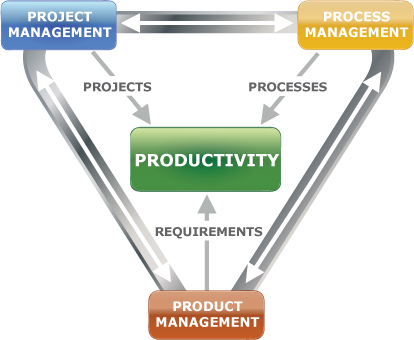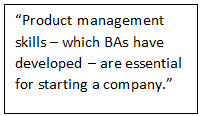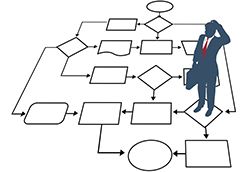Part 1: What do Business Analysis and Entrepreneurship Have in Common?
 Welcome to the first installment of the Entrepreneurial BA series. Given we are both entrepreneurs and BAs it seems logical for to write about this topic. But, why bother? What possibly could be relevant about entrepreneurialism for a business analyst? Well, for starters, it’s a great career option and more and more viable with each passing year. Even if you are not interested in forming a start-up, the principles of entrepreneurship are becoming increasingly important for organizations to innovate and stay competitive.
Welcome to the first installment of the Entrepreneurial BA series. Given we are both entrepreneurs and BAs it seems logical for to write about this topic. But, why bother? What possibly could be relevant about entrepreneurialism for a business analyst? Well, for starters, it’s a great career option and more and more viable with each passing year. Even if you are not interested in forming a start-up, the principles of entrepreneurship are becoming increasingly important for organizations to innovate and stay competitive.
In this ongoing series, we’ll explore several aspects of entrepreneurs and intrapreneurs and what it means for business analysis. My firm belief is that by adopting a more entrepreneurial way of working, BAs will be more effective and organizations will benefit. Let’s get started!
Career choices. If you are a BA, you may be wondering about your career options. To be honest, we all do that, but we tend to hear about career concerns from business analysts more than anyone. Should we aspire to be project managers when we grow up? That used to be the most common next step, and more BAs are saying “no way” to that. What about becoming business architects? That would be a logical move for “logical” people since architects tend to be abstract thinkers and focused on the “big picture.”
In March, 2014, Cathy Brunsting wrote an insightful article called “Beyond the Business Analyst Role: What’s Next?” Besides the above options she mentioned Product Owner, Product Manager, and other managerial roles. To me, the product-oriented roles are the most conducive for a BA to use his or her skills to help their organization grow. Both roles take advantage of business knowledge and/or BA-type skills to define, refine, and steer development of new products.
Wait a second. Designing and developing new products is what entrepreneurs do, isn’t it? There is more to being an entrepreneur, which I’ll cover in another article. But, a critical part of starting a business or line of business is creating a new product or service or one that is better than the market currently has. That is often what business analysts do, and to some extent, project managers too.
Entrepreneur. First, let me define entrepreneur; there are many definitions floating around. Translating from the French, entrepreneurs “undertakes a venture” which involves some risk. A longer and more precise definition from Investopedia (a favorite web site of mine) is the following:
“An individual who, rather than working as an employee, runs a small business and assumes all the risk and reward of a given business venture, idea, or good or service offered for sale. The entrepreneur is commonly seen as a business leader and innovator of new ideas and business processes.”1
Entrepreneurs have been around for quite a while, with the first usage of the term in the early 1700s. Classic examples of tech entrepreneurs are Steve Jobs and Mark Zuckerburg. Coco Chanel was a fashion and perfume innovator and entrepreneur in the 20th century. Levi Strauss created the Levi’s jeans company in the 1800s. James Watt was an 18th century entrepreneur. He didn’t invent the steam engine but he innovated several improvements on it.
Intrapreneur. If you do entrepreneurial work inside an organization, the common term for you is “intrapreneur.” We don’t like the term because if one doesn’t assume risks then how can they be called a “preneur,” or someone who accepts risks? On the other hand, I very much like the concept of people in organizations starting up ventures to launch new products and services. Here is the Investopedia definition of intrapreneur:
“An inside entrepreneur, or an entrepreneur within a large firm, who uses entrepreneurial skills without incurring the risks associated with those activities. Intrapreneurs are usually employees within a company who are assigned a special idea or project, and are instructed to develop the project like an entrepreneur would.”2
Now that we have some definitions in place, let’s move on to comparing business analysis and entrepreneurship.
Product vs. Project vs. Process. Years ago our company put together something we called the “productivity triangle.” Any organization is productive when they create or provide products or services that customers want and need. Creating them is done through projects, and project management is at the core of that, naturally. Re-creating the new product on an ongoing basis is done through processes, which need to be improved or optimized periodically. Process management is central to that and projects may need launching to do the improvement.
Underlying both of these disciplines is product management. The closest parallels to business analysis are the initial requirements and design. Another huge part of product management is developing business cases, which BAs often do at companies. Over time, additional requirements surface and new features are added and can be anywhere from small pieces to large releases. Product management both drives and supports projects and processes, completing the productivity triangle. See Figure 1.
 Figure 1
Figure 1
 Business Analysis and Entrepreneurship. So, what does all this have to do with BAs being entrepreneurs you may ask? If we view business analysis work as largely product management, BAs can port those skills to creating new products for a startup. Similarly, new product development within an organization can be done in an entrepreneurial way, and business analysis skills are critical. Speaking from experience, formal project management is helpful but not as crucial for a startup. (Scrum methods are more helpful, but that is a separate topic.) Managing processes is the least important for a startup, since it won’t have processes to manage until it starts to “re-create” the products it has built. The other two legs of the triangle are essential for growing a company. Product management skills – which BAs have developed – are essential for starting a company or product.
Business Analysis and Entrepreneurship. So, what does all this have to do with BAs being entrepreneurs you may ask? If we view business analysis work as largely product management, BAs can port those skills to creating new products for a startup. Similarly, new product development within an organization can be done in an entrepreneurial way, and business analysis skills are critical. Speaking from experience, formal project management is helpful but not as crucial for a startup. (Scrum methods are more helpful, but that is a separate topic.) Managing processes is the least important for a startup, since it won’t have processes to manage until it starts to “re-create” the products it has built. The other two legs of the triangle are essential for growing a company. Product management skills – which BAs have developed – are essential for starting a company or product.
What do you think? Are there parallels between business analysis and entrepreneurship? Leave your comments below.
Don’t forget to leave your comments below.
About the Authors:
Richard Larson, PMP, CBAP, PMI-PBA, President and Founder of Watermark Learning, is a successful entrepreneur with over 30 years of experience in business analysis, project management, training, and consulting. He has presented workshops and seminars on business analysis and project management topics to over 10,000 participants on five different continents.
Rich is a frequent speaker at Business Analysis and Project Management national conferences and IIBA® and PMI® chapters around the world. He has contributed to the BA Body of Knowledge version 2.0 and 3.0, the PMI BA Practice Guide, and the PM Body of Knowledge, 4th edition. He and his wife Elizabeth Larson have co-authored three books, The Influencing Formula, CBAP Certification Study Guide, and Practitioners’ Guide to Requirements Management.
Elizabeth Larson, PMP, CBAP, CSM, PMI-PBA is Co-Principal and CEO of Watermark Learning and has over 30 years of experience in project management and business analysis. Elizabeth’s speaking history includes repeat presentations for national and international conferences on five continents.
Elizabeth has co-authored three books: The Practitioner’s Guide to Requirements Management, CBAP Certification Study Guide, and The Influencing Formula. She has also co-authored chapters published in four separate books.
Elizabeth was a lead author on the PMBOK® Guide – Fourth and Fifth Editions, PMI’s Business Analysis for Practitioners – A Practice Guide, and the BABOK® Guide 2.0, as well as an expert reviewer on BABBOK® Guide 3.0.
References:
1. http://www.investopedia.com/terms/e/entrepreneur.asp
2. http://www.investopedia.com/terms/i/intrapreneur.asp
 A healthy respect for the magnitude of what we don’t know
A healthy respect for the magnitude of what we don’t know

 Welcome to the first installment of the Entrepreneurial BA series. Given we are both entrepreneurs and BAs it seems logical for to write about this topic. But, why bother? What possibly could be relevant about entrepreneurialism for a business analyst? Well, for starters, it’s a great career option and more and more viable with each passing year. Even if you are not interested in forming a start-up, the principles of entrepreneurship are becoming increasingly important for organizations to innovate and stay competitive.
Welcome to the first installment of the Entrepreneurial BA series. Given we are both entrepreneurs and BAs it seems logical for to write about this topic. But, why bother? What possibly could be relevant about entrepreneurialism for a business analyst? Well, for starters, it’s a great career option and more and more viable with each passing year. Even if you are not interested in forming a start-up, the principles of entrepreneurship are becoming increasingly important for organizations to innovate and stay competitive. Figure 1
Figure 1 Business Analysis and Entrepreneurship. So, what does all this have to do with BAs being entrepreneurs you may ask? If we view business analysis work as largely product management, BAs can port those skills to creating new products for a startup. Similarly, new product development within an organization can be done in an entrepreneurial way, and business analysis skills are critical. Speaking from experience, formal project management is helpful but not as crucial for a startup. (Scrum methods are more helpful, but that is a separate topic.) Managing processes is the least important for a startup, since it won’t have processes to manage until it starts to “re-create” the products it has built. The other two legs of the triangle are essential for growing a company. Product management skills – which BAs have developed – are essential for starting a company or product.
Business Analysis and Entrepreneurship. So, what does all this have to do with BAs being entrepreneurs you may ask? If we view business analysis work as largely product management, BAs can port those skills to creating new products for a startup. Similarly, new product development within an organization can be done in an entrepreneurial way, and business analysis skills are critical. Speaking from experience, formal project management is helpful but not as crucial for a startup. (Scrum methods are more helpful, but that is a separate topic.) Managing processes is the least important for a startup, since it won’t have processes to manage until it starts to “re-create” the products it has built. The other two legs of the triangle are essential for growing a company. Product management skills – which BAs have developed – are essential for starting a company or product.

 Anyone who has studied the history of medicine will notice that some of our biggest breakthroughs have been the result of a single scientist breaking the rules. History tells us these are the same people who have also effectively changed a conventional paradigm. For example, the world is flat, wash your hands, earth revolves around the sun. Often times, the rule-breaking scientist pays a considerable price for being a change agent. The pain of change forces an outlandish idea to become a piece of conventional wisdom.
Anyone who has studied the history of medicine will notice that some of our biggest breakthroughs have been the result of a single scientist breaking the rules. History tells us these are the same people who have also effectively changed a conventional paradigm. For example, the world is flat, wash your hands, earth revolves around the sun. Often times, the rule-breaking scientist pays a considerable price for being a change agent. The pain of change forces an outlandish idea to become a piece of conventional wisdom.